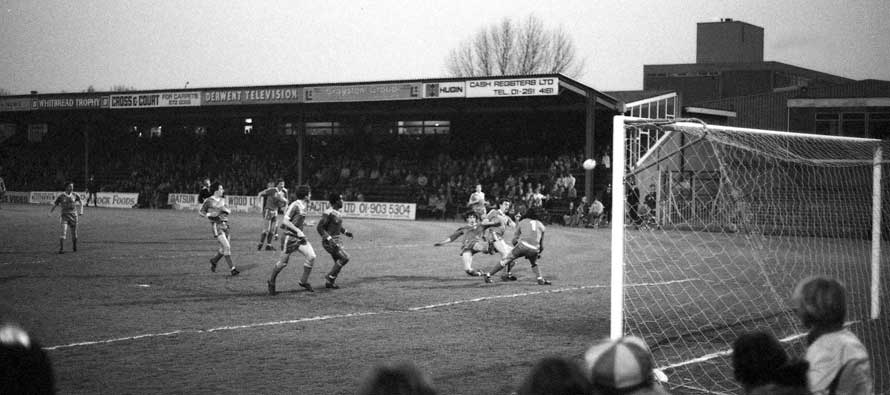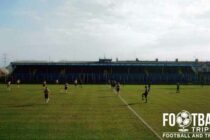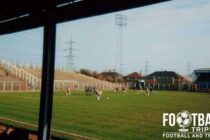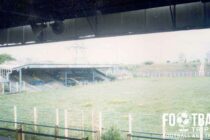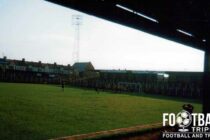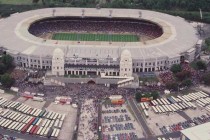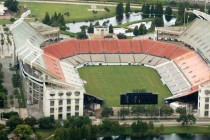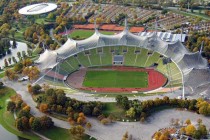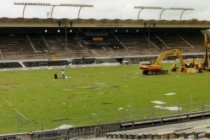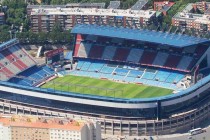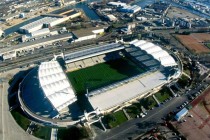Plough Lane was the former home Wimbledon FC (1889-2004) which closed after the publication of the Taylor report in 1990, leaving the South West London based team without a home and ultimately to their demise.
Wimbledon FC Stadium Guide
Stadium Facts
| Overview | |
|---|---|
| Team: | Wimbledon FC |
| Opened: | 1912 |
| Capacity: | 15,876 |
| Address: | London |
Old Plough Lane (1912) History
The Stadium was first used for football matches in 1912 when Wimbledon Football Club purchased the leasehold on an unused piece of swampland located on the corner of Plough Lane and Haydons Road. The inaugural match was held against Carshalton Athletic in September 1912 with the club managing to scramble together a stand capable of holding 500 fans, basic dressing room facilities and a playing surface which wasn’t completely sodden.
Improvements were made up to and during both World War with the vice president Gill Knight boasting that Plough Lane at the time was “The finest ground in the southern district”. Reaching a peak capacity of 30,000 the newly constructed South stand unfortunately suffered bomb damaging during 1944 with the fencing also destroyed meaning the club couldn’t effectively charge people for admittance. Capturing the early ramshackle spirit of the club, half-time collections were made in order to keep the club ticking over whilst repairs were made.
In the 1950s Merton Borough Council purchased the ground’s freehold and then generously donated it to the club, with the clause that they could essentially buy it back for very little if the ground should no longer be used for sport. With the addition of floodlights ushered in with a friendly match against London neighbours Arsenal, Wimbledon elected to join the Football League in 1977 and slowly began to crawl their way up through the tiers of English football.
Reaching the first division in 1986 which was soon be re-branded as the Premier League in just 9 years, Plough Lane never really had chance to develop in the same way of other London based grounds and despite a famous Wembley appearance in 1988 where “The Crazy Gang” lifted the FA Cup against all odds against Liverpool, Wimbledon never really had the financial muscle to completely renovate their stadium to modern standards.
This fact was highlighted with the publication of the Taylor Report in 1990 after the tragic events of Hillsborough unfolded year prior when 96 football fans sadly lost their lives. The report introduced new safety measures across all stadiums in Britain, most notably the enforcement that stadiums should now become all-seated, something which Plough Lane was entirely unprepared for with the stands comprised of a majority of terracing.
After exploring the options, Wimbledon decided to temporarily ground share at Crystal Palace’s Selhurst Park and thus the club moved in at the start of the 1991-1992 season. With the redevelopment of Plough Lane deemed economically unfeasible, the club explored the option of building a new stadium within the London Borough of Merton and despite plans being approved by the council as far back as 1988, the move never happened with many citing a lack of financial resources.
Plough Lane continued to be used by the reserve teams of both Wimbledon and Crystal Palace until 1998 when Sam Hammam, owner of the club and therefore the land, sold it to Safeway who planned to build a supermarket, later to be used for homes. Now entirely without a home, the club ineffectively explored other options until a consortium purchased the club and relocated it to Milton Keynes, eventually becoming the Milton Keynes Dons, in a move which saddened both the F.A and football fans across the country.
As a response fans of Wimbledon F.C created a new club known as A.F.C Wimbledon who unlike the newly formed Milton Keynes based team, were made to start again in non-league football – the lowest tier of Football Pyramid. The club ground share at Kingsmeadow with Kingstonian F.C, in south-west London with fans clamouring for an eventual return to their historical home in the Borough of Merton, perhaps in a New Plough Lane.
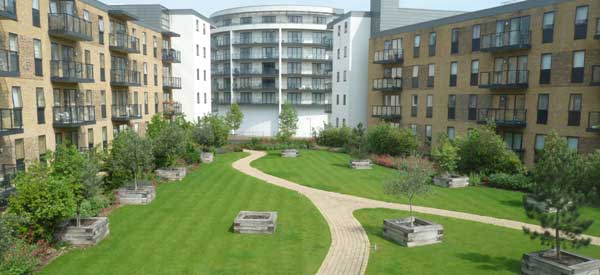
View of Old Plough Lane (1912)

